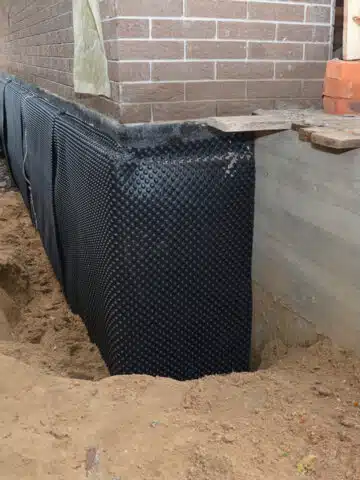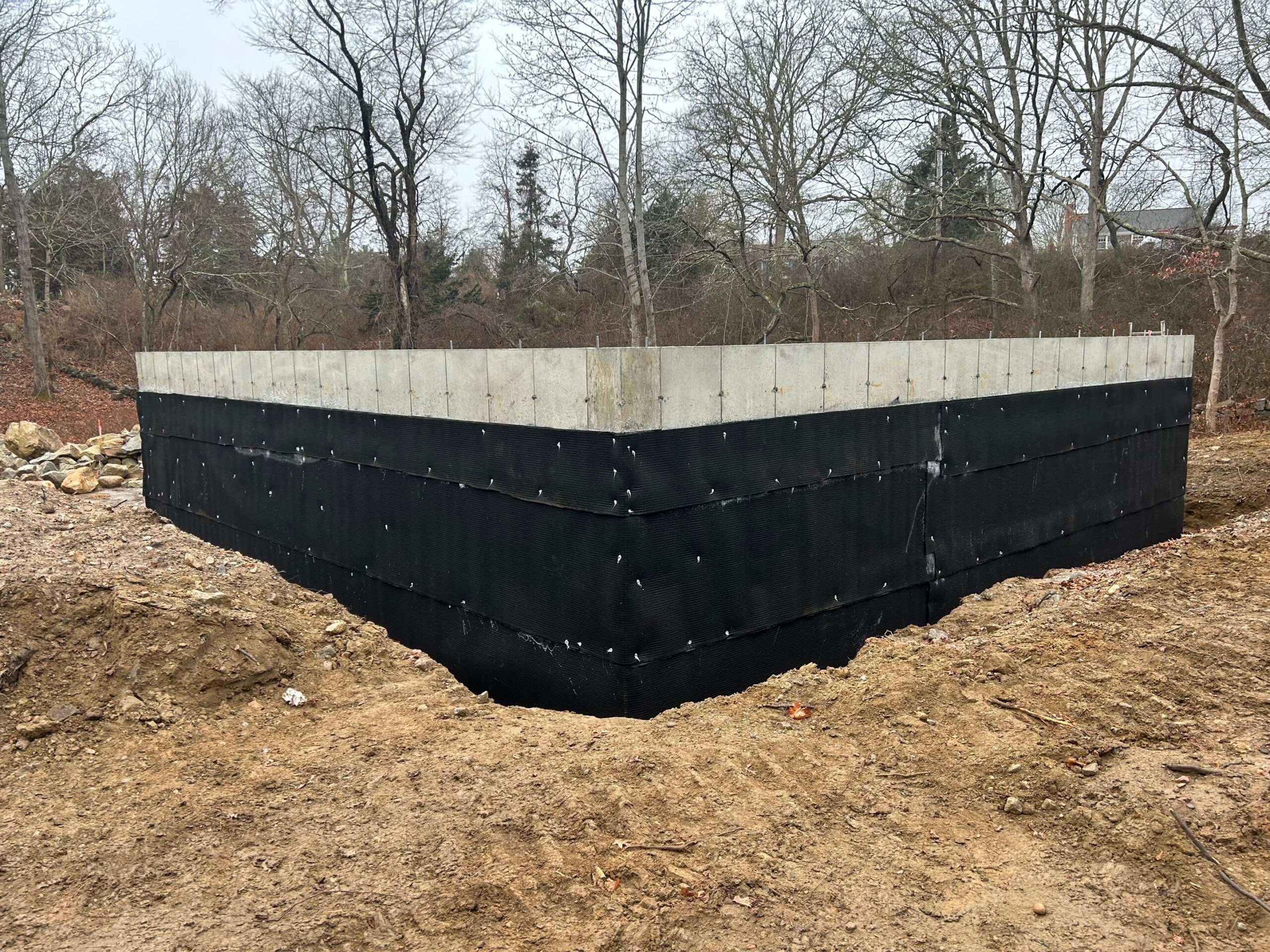Checking Out the Numerous Methods and Solutions for Effective Damp Proofing
Dampness in structures poses considerable obstacles to both architectural honesty and interior air high quality. Numerous methods and options have emerged to fight this prevalent problem. From typical damp-proof membrane layers to cutting-edge chemical treatments, each method uses special advantages. Comprehending these choices is important for effective wetness control. Selecting the appropriate solution depends on certain building problems and demands, triggering additional exploration right into the most effective wet proofing approaches readily available.
Comprehending the Reasons For Moisture
Although wetness can emerge from numerous sources, comprehending these causes is essential for efficient removal. Typically, wetness stems from 3 primary resources: rising moist, permeating damp, and condensation. Increasing moist happens when groundwater travels up-wards via permeable materials, such as brick or rock, commonly due to a lack of a reliable barrier (mould removal newcastle). Passing through wet is generally brought on by external variables, consisting of roofing leaks, defective gutters, or damaged wall surfaces, permitting water to penetrate a residential property. Condensation, on the various other hand, results from excess moisture airborne, typically aggravated by poor ventilation and temperature level distinctions, bring about water droplets basing on surface areas. Determining these underlying issues is necessary, as each kind of wetness requires a customized approach for remediation. Proper evaluation aids in identifying the most effective solutions, eventually safeguarding the structural stability of a structure and improving indoor air quality
Standard Damp-Proof Membranes

Chemical Damp-Proofing Solutions
Chemical damp-proofing options use a cutting-edge method to avoiding wetness invasion in structures. These techniques commonly include the application of fluid chemicals that penetrate stonework and create an obstacle versus rising wet. Frequently utilized chemicals consist of silanes, siloxanes, and other water-repellent representatives that respond with surface area materials to develop a hydrophobic layer.The application procedure typically requires drilling openings right into the walls, injecting the chemical option, and allowing it to treat. This approach is particularly advantageous for older structures where traditional damp-proof membranes might be not practical. In addition, chemical damp-proofing can be much less turbulent and extra cost-efficient than extensive restoration projects.While efficient, these services depend upon correct application and environmental problems for peak performance. Regular maintenance and tracking are important to guarantee the longevity of the damp-proofing therapy. Overall, chemical damp-proofing stands for a versatile alternative for protecting buildings versus moisture-related damage
Tooth Cavity Wall Building And Construction Strategies
Tooth cavity wall surface building and construction strategies supply many advantages, especially in wetness control and energy performance. By integrating an air void in between two layers of masonry, these wall surfaces properly alleviate water ingress while boosting insulation. This combination not just safeguards frameworks from moisture but additionally adds to lowered power consumption.
Advantages of Dental Caries Wall Surfaces
When taking into consideration effective damp proofing approaches, the advantages of dental caries wall surfaces stick out prominently. Dental caries wall surfaces contain two separate layers, creating an air void that effectively minimizes wetness infiltration. This layout minimizes the threat of moisture, as the external wall surface serves as a barrier against rain and water ingress. Furthermore, tooth cavity walls boost thermal insulation, which adds to power efficiency by decreasing warm loss. They also give sound insulation, aiding to produce a quieter indoor environment. Moreover, the air gap enables for air flow, which aids in wetness control and reduces the probability of mold and mildew development. These advantages not only enhance the general convenience of a structure but additionally add to its long life and structural integrity.
Moisture Control Methods
Effective moisture control approaches are vital in dental caries wall surface construction to guarantee long-lasting defense against dampness. One main approach entails the consolidation of weep holes, which promote water drain from the cavity, avoiding buildup. In addition, the usage of breathable membrane layers can aid manage moisture degrees while allowing caught vapor to leave. Correct placement of insulation is also essential, as it needs to not obstruct drainage courses. Guaranteeing that the outer leaves of the dental caries wall surface are built with waterproof materials enhances total resilience. Routine upkeep checks are important to identify any obstructions or damages early, guarding the structure's integrity. Eventually, a combination of these techniques develops a durable protection against wetness invasion in cavity wall surfaces.
Insulation and Energy Performance
Insulation plays an important function in improving energy efficiency within tooth cavity wall building. By including protecting products, these wall surfaces produce a thermal barrier that decreases heat loss and reduces energy intake. Efficient insulation not just helps keep a secure indoor temperature however likewise minimizes the risk of moisture, as it stops condensation within the wall surface dental caries. Different techniques, such as using inflexible foam boards or mineral wool, can be utilized to achieve ideal insulation performance. In addition, correct setup is essential to ensure that voids and voids are minimized, which can or else endanger power performance. Inevitably, a well-insulated cavity wall surface adds greatly to total sustainability and lowers cooling and heating costs for house owners.
Outside Damp Proofing Methods
External damp proofing methods are important for securing structures from dampness seepage. Two efficient techniques include the application of water resistant membranes and the installment of French drains pipes. These options help reduce water build-up and protect the honesty of structures.
Waterproof Membrane Application
While different approaches exist for stopping dampness access, the application of water resistant membrane layers stays an extremely efficient outside damp proofing strategy. These membrane layers are generally made from materials such as polyethylene, rubber, or modified asphalt, offering a durable obstacle against water penetration. The installment procedure involves applying the membrane layer to the exterior surfaces of foundations or walls, guaranteeing total coverage to stop leaks. Correct adhesion and securing at joints are crucial to taking full advantage of effectiveness. Water resistant membrane layers can be applied in various types, consisting of fluid finishes and sheet membrane layers, allowing for versatility based upon the particular demands of the framework. This method not just shields structures from moisture however additionally boosts their durability and architectural stability.
French Drain Setup
One effective technique for taking care of groundwater and avoiding moisture build-up around a building's structure is the installment of a French drain. This drain system includes a trench filled up with gravel and a perforated pipe that reroutes surface area water far from the structure. Proper setup requires cautious preparation, making certain that the drainpipe inclines away from the framework to promote perfect water flow. In addition, the place of the drainpipe is vital; it should be placed in areas vulnerable to pooling or excess dampness. Regular maintenance, consisting of clearing debris from the crushed rock and making sure the pipeline stays unblocked, is necessary for long-term performance. Eventually, a well-installed French drainpipe can significantly lower the danger of water-related issues in foundations and cellars.
Interior Waterproofing Approaches
Interior waterproofing strategies are crucial for safeguarding a structure's interior from dampness seepage and prospective water damages. These methods typically entail the application of specific materials and strategies developed to develop a wetness barrier within the framework. One typical approach is making use of water-proof finishes or sealants on walls and floorings, which avoid moisture from passing through surfaces.Additionally, mounting indoor drainage systems, such as sump pumps, can effectively manage water build-up in basements and creep rooms. One more technique involves using vapor barriers, which are set up to hinder dampness activity from the ground right into living spaces.Moreover, resolving any type of splits or spaces in wall surfaces or foundations with proper sealers guarantees a thorough protection against water invasion. By implementing these interior waterproofing approaches, residential or commercial property proprietors can greatly decrease the danger of mold development, architectural damages, and various other moisture-related concerns. Proper execution of these techniques is vital for lasting defense and structure integrity.
Routine Maintenance and Assessment Practices
Normal maintenance and evaluation techniques are important for ensuring the lasting effectiveness of damp proofing remedies in any structure. Routine checks enable homeowner to identify very early signs of wetness intrusion, such as peeling off paint, mold and mildew development, and mildewy odors. These indicators can signal underlying issues that require immediate attention.Inspections ought to be carried out at the very least yearly, focusing on susceptible areas like cellars, creep rooms, and outside walls. During these evaluations, homeowner must take a look at sealants, drain systems, and air flow to validate they operate correctly.Additionally, preserving rain gutters and downspouts is essential, as clogged up systems can bring about water build-up near the foundation. Executing a normal upkeep timetable, in addition to timely repair work, can considerably expand the lifespan of damp proofing actions and protect the architectural stability of the building. more info Proactive actions ultimately add to the total health and security of the living setting.
Often Asked Inquiries
Exactly How Lengthy Does Damp Proofing Normally Last?
The duration of moist proofing performance varies, normally lasting between 20 to 50 years. Variables such as application quality, environmental problems, and maintenance methods considerably influence the durability of the damp proofing therapy.

Can I Damp Evidence My Home Myself?
The specific considered the feasibility of do it yourself damp proofing. With appropriate research study and the best products, it is possible. They additionally recognized the importance of expert guidance to ensure long-lasting efficiency and protect against future problems.
What Are the Indicators of Inefficient Damp Proofing?
Indicators of ineffective moist proofing include relentless moldy smells, visible mold development, peeling off paint, damp patches on wall surfaces, and wood decay - mould removal newcastle. Property owners need to attend to these concerns immediately to avoid additional damages and health worries
Does Damp Proofing Affect Indoor Air Quality?

Just How Much Does Professional Damp Proofing Expense?
Expert damp proofing prices differ substantially, commonly varying from $1,000 to $5,000 depending upon the home's dimension, the level of the moist issue, and selected techniques. Each situation requires a customized assessment for exact prices. Generally, wetness stems from 3 key resources: increasing moist, permeating wet, and condensation. When thinking about effective wet proofing methods, the benefits of dental caries walls stand out prominently. Exterior moist proofing approaches are essential for securing structures from moisture seepage. While various methods exist for avoiding dampness ingress, the application of water-proof membrane layers stays a very effective outside moist proofing strategy. Indicators of inadequate wet proofing consist of persistent mildewy smells, noticeable mold and mildew growth, peeling paint, moist patches on walls, and wood decay.
Comments on “Combat black mold effectively with mould removal newcastle solutions”